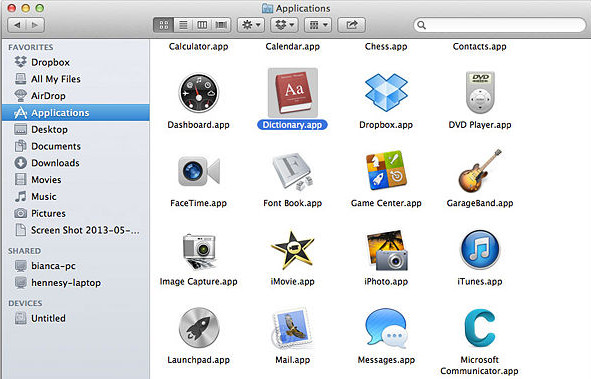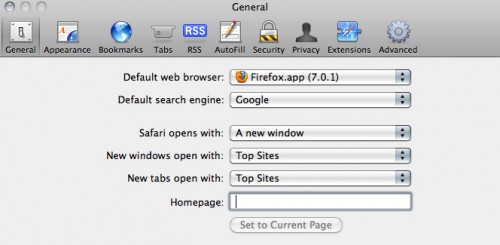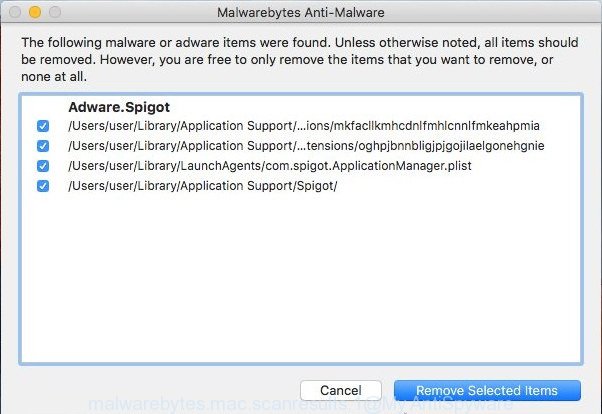What is WebScheduler app?
WebScheduler app is a potentially unwanted program (PUP) belonging to the adware family that is created to redirect computer users to unsolicited deals from various merchants. WebScheduler can cause problems for your Apple Mac. It can generate numerous additional pop-up, banner, pop-under and in-text link ads flooding on your web-browser; collect your data like login details, online searches, etc; run in the background and drag down your Apple Mac running speed; give more chances for other adware software, PUPs even malware to get on your Apple Mac.

Unwanted ads
Does WebScheduler adware steal your personal information? Adware can install a component that enables its developer to track which web pages you visit, which products you look at upon those pages. They are then able to select the type of advertisements they show you. So, if you had adware software on your MAC, there is a good chance you have another that is collecting and sharing your data with third parties, without your consent.
Threat Summary
| Name | WebScheduler app |
| Type | adware software, potentially unwanted application (PUA), pop-ups, pop up virus, pop up advertisements |
| Symptoms |
|
| Removal | WebScheduler removal guide |
How does WebScheduler Adware get on your computer
WebScheduler and other adware usually is bundled within some free programs that you download off of the Internet. So, think back, have you ever download and run any freeware. In order to avoid infection, in the Setup wizard, you should be be proactive and carefully read the ‘Terms of use’, the ‘license agreement’ and other installation screens, as well as to always select the ‘Manual’ or ‘Advanced’ install method, when installing anything downloaded from the Internet.
In the steps below, we will explain useful methods on how to free your Apple Mac of adware and remove WebScheduler adware software from your browser.
How to Remove WebScheduler adware (removal guidance)
Not all undesired programs like WebScheduler adware that causes multiple unwanted advertisements and popups are easily uninstallable. You might see pop ups, deals, text links, in-text ads, banners and other type of ads in the Mozilla Firefox, Chrome and Safari and might not be able to figure out the program responsible for this activity. The reason for this is that many undesired apps neither appear in the Finder. Therefore in order to fully delete WebScheduler adware software, you need to use the steps below. Read it once, after doing so, please bookmark this page (or open it on your smartphone) as you may need to shut down your internet browser or reboot your MAC OS.
To remove WebScheduler, complete the following steps:
- Manual WebScheduler adware removal
- Automatic Removal of WebScheduler
- How to block WebScheduler adware
- To sum up
Manual WebScheduler adware removal
First try to remove WebScheduler manually; to do this, follow the steps below. Of course, manual adware software removal requires more time and may not be suitable for those who are poorly versed in system settings. In this case, we recommend that you scroll down to the section that describes how to remove WebScheduler ads using free tools.
Delete potentially unwanted apps using the Finder
In order to delete potentially unwanted applications such as this adware software, open the Finder and click on “Applications”. Check the list of installed apps. For the ones you do not know, run an Internet search to see if they are adware software, browser hijacker infection or PUPs. If yes, uninstall them off. Even if they are just a programs which you do not use, then removing them off will increase your MAC OS start up time and speed dramatically.
Open Finder and click “Applications” such as the one below.

You will see a list of software installed on your MAC system. We recommend to pay maximum attention to the application you installed last. Most probably, it is the WebScheduler or other PUP. If you are in doubt, you can always check the program by doing a search for her name in Google, Yahoo or Bing. Once the application which you need to remove is found, simply right press on its name, and choose “Move to Trash”.
Don’t forget, select Finder, then “Empty Trash”.
Delete WebScheduler adware software from Safari
By resetting Safari internet browser you return your web-browser settings to its default state. This is first when troubleshooting problems that might have been caused by WebScheduler adware.
Run Safari internet browser. Next, choose Preferences from the Safari menu.

First, click the “Security” tab. Here, choose “Block pop-up windows”. It will stop some types of popups.
Now, click the “Extensions” tab. Look for dubious extensions on left panel, select it, then click the “Uninstall” button. Most important to delete all dubious extensions from Safari.
Once complete, check your start page and search engine settings. Click “General” tab. Make sure that the “Homepage” field contains the website you want or is empty.

Make sure that the “Search engine” setting shows your preferred search provider. In some versions of Safari, this setting is in the “Search” tab.
Remove WebScheduler adware from Google Chrome
If you have adware software problem or the Chrome is running slow, then reset Chrome settings can help you. In the steps below we’ll show you a way to reset your Google Chrome settings to original settings without reinstall. This will also help to remove WebScheduler ads from your internet browser.

- First, start the Chrome and press the Menu icon (icon in the form of three dots).
- It will open the Chrome main menu. Select More Tools, then press Extensions.
- You will see the list of installed plugins. If the list has the addon labeled with “Installed by enterprise policy” or “Installed by your administrator”, then complete the following guidance: Remove Chrome extensions installed by enterprise policy.
- Now open the Chrome menu once again, press the “Settings” menu.
- Next, click “Advanced” link, that located at the bottom of the Settings page.
- On the bottom of the “Advanced settings” page, click the “Reset settings to their original defaults” button.
- The Chrome will show the reset settings dialog box as shown on the screen above.
- Confirm the browser’s reset by clicking on the “Reset” button.
- To learn more, read the post How to reset Chrome settings to default.
Remove WebScheduler adware from Firefox
If the Mozilla Firefox internet browser program is hijacked by WebScheduler, then resetting its settings can help. The Reset feature is available on all modern version of Firefox. A reset can fix many issues by restoring Firefox settings such as start page, newtab page and search engine by default to their default state. However, your saved passwords and bookmarks will not be changed, deleted or cleared.
First, run the Mozilla Firefox. Next, click the button in the form of three horizontal stripes (![]() ). It will open the drop-down menu. Next, press the Help button (
). It will open the drop-down menu. Next, press the Help button (![]() ).
).

In the Help menu press the “Troubleshooting Information”. In the upper-right corner of the “Troubleshooting Information” page press on “Refresh Firefox” button as displayed on the screen below.

Confirm your action, click the “Refresh Firefox”.
Automatic Removal of WebScheduler
Best WebScheduler removal tool should search for and remove adware, malicious software, potentially unwanted programs, toolbars, hijacker infections, and pop-up generators. The key is locating one with a good reputation and these features. Most quality programs listed below offer a free scan and malware removal so you can detect and delete undesired software without having to pay.
Run MalwareBytes Free to remove WebScheduler
We advise using the MalwareBytes AntiMalware. You may download and install MalwareBytes to detect adware and thereby remove WebScheduler ads from your web browsers. When installed and updated, this free malware remover automatically finds and deletes all threats exist on the machine.

- MalwareBytes AntiMalware can be downloaded from the following link.
Malwarebytes Anti-malware (Mac)
21175 downloads
Author: Malwarebytes
Category: Security tools
Update: September 10, 2020
- Once the download is finished, close all applications and windows on your computer. Open a directory in which you saved it. Run the downloaded file and follow the prompts.
- Press the “Scan” button . MalwareBytes Free tool will start scanning the whole Apple Mac to find out WebScheduler and other unwanted software. While the utility is checking, you may see how many objects and files has already scanned.
- When the scan is complete, MalwareBytes will open a list of all items found by the scan. Make sure to check mark the items which are unsafe and then click “Remove Selected Items”.
How to stay safe online
The AdGuard is a very good ad-blocking program for the Mozilla Firefox, Chrome and Safari, with active user support. It does a great job by removing certain types of annoying advertisements, popunders, pop-ups, unwanted newtab pages, and even full page ads and website overlay layers. Of course, the AdGuard can stop unwanted websites automatically or by using a custom filter rule.

AdGuard can be downloaded from the following link.
3888 downloads
Author: © Adguard
Category: Security tools
Update: January 17, 2018
After downloading is done, run the downloaded file. The “Setup Wizard” window will show up on the computer screen.
Follow the prompts. AdGuard will then be installed. A window will show up asking you to confirm that you want to see a quick tutorial. Click “Skip” button to close the window and use the default settings, or click “Get Started” to see an quick instructions that will assist you get to know AdGuard better.
Each time, when you launch your computer, AdGuard will start automatically and stop annoying ads, block harmful or misleading web-sites.
To sum up
Now your Apple Mac should be clean of the WebScheduler and other unwanted software. We suggest that you keep AdGuard (to help you block unwanted pop up ads and annoying malicious web pages) and MalwareBytes AntiMalware (to periodically scan your MAC OS for new malicious software, hijacker infections and adware). Make sure that you have all the Critical Updates recommended for Mac OS. Without regular updates you WILL NOT be protected when new browser hijackers, harmful software and adware are released.
If you are still having problems while trying to remove WebScheduler ads from your internet browser, then ask for help here.

















